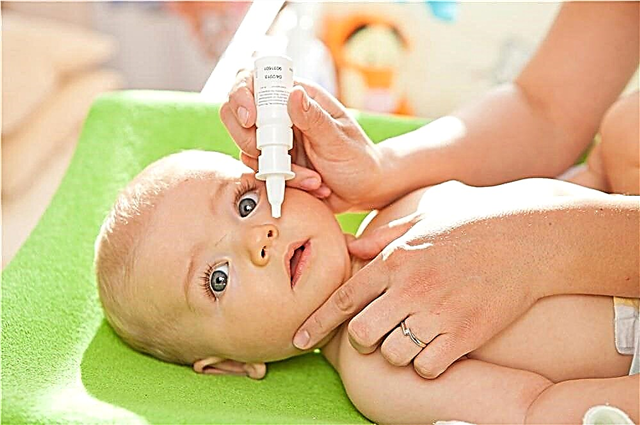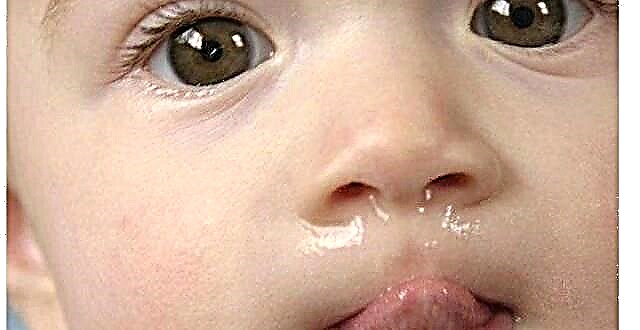Crawling is a significant step in the formation of the baby's muscular system. In this regard, most pediatricians recommend that parents develop the indicated skill in children in all possible ways, stimulating them to this action.

Children crawl with great pleasure
When the baby starts to crawl
There is no consensus about the age at which a child should start crawling. Some experts are sure that the baby begins to make its first attempts to crawl from the day of its birth. Moreover, he does it at the level of reflexes - when the baby is turned from breast to tummy, he begins to try to push off from the surface.
From the age of three months, many babies already begin to sit and learn to crawl, mainly in their bellies, lying on their stomachs, energetically moving their legs and arms.
Important! Parents should be especially careful to keep an eye on the child when he begins to master the process of crawling. Rolling over on its own, the baby can fall out of bed if left unattended even for a minimum amount of time.
Since girls develop much faster than boys, they begin to sit down, crawl, stand on their legs and walk earlier - at about four months.
Do not panic if the baby does not get up on all fours by six months. Children are different, their development takes place according to an individual schedule. Parents should have a reason to start worrying only if the crumbs have no desire to master the world around them on all fours by nine months. In this case, you will need to understand what is the reason for this behavior of the crumbs, and take adequate measures to eliminate it.

First, the kids crawl on their tummies, only then they get on all fours
Reasons why the baby does not crawl at 9 months
The fact that a baby does not crawl at 9 months is not always an indicator of pathology. You should start worrying if the baby was born with hypoxia. In addition, the reason may lie in out-of-sync movements of the legs or arms (for example, due to microtrauma of the cervical spine or slight asymmetry of the pelvic region). Several sessions with an osteopath, and the problem is easily solved.
A neurosis or other disease that has an impact on the fragile psyche of the baby can affect. If the child was in some stressful situation and by the ninth month does not make attempts to crawl, it is imperative to show him to a specialist.
Excess weight can become the reason for unwillingness to crawl. As a rule, chubby kids have a lower activity indicator - they later begin to sit up and walk.
If the baby is sick, and his body is fighting some serious infection, it is absolutely not worth it to be surprised that the child does not get up on all fours at 9 months. All his strength and energy are spent on fighting the disease. As soon as the baby recovers, the problem will be solved by itself, and he will still have time to impress his parents with his new skills.

The kid will crawl more willingly if mom gives him an example
Do not forget about the peculiarities of temperament. Active and inquisitive kids are in a hurry to get acquainted with a new world for them. Already at four months they grab objects with their pens, trying to crawl away somewhere. Another category of babies is more melancholic - their knowledge of the world is contemplative. Such babies may not start crawling at 9 months.
If you learned to walk before you crawl

Sometimes the kids immediately stand on their feet and begin to take the first steps.
Not many parents are aware that some babies completely skip the crawling stage in their development, and immediately try to stand up and walk. There is a point of view that this scenario is undesirable. The child's spine is not ready for such a load, one leg “does not understand” what the other is doing, and all this taken together ultimately leads to scoliosis and aching joints in the future.
Most experts believe that if a child of 9 months does not crawl and does not stand up, and after a while begins to get up and walk, there is nothing to worry about. The main thing is not to force the baby to do what he is not ready for, and to make sure that he does not have any pathologies in the development of the musculoskeletal system. If the child does not want to crawl, but the specialist does not notice any deviations in his development, then there is nothing to worry about.
How to help your child learn to crawl
If the child does not get on all fours at 9 months, the parents have a completely logical and understandable desire to help the baby. Mommies and daddies should understand that in this case, the little one needs support, and not the desire to accelerate child development in an artificial way.
Doctor Komarovsky is convinced that any child is able to master the crawling skill by himself. The parent's job is to help develop his muscles. In no case should one interfere with the course of the skill formation itself. If the child's handle and legs are still not strong enough in terms of the ability to hold their own weight, you should not forcefully put the baby on all fours.
Preventive massage
There is one very effective method for the effective development of children's muscular system. This is a preventive massage. Doing it yourself without appropriate experience is not strongly recommended. Better to go to a polyclinic or a private clinic. Alternatively, you can hire a professional massage therapist and invite him to your home. Such massage most often includes the following manipulations:
- crossing of handles;
- rolling over from the back to the tummy;
- trituration;
kneading; - tapping or pinching the back and buttocks;
- sitting down for a short period of time;
- lifting straightened legs, etc.
The answer to the question why parents should not do massage without the participation of specialists is obvious: without experience, they can overdo it with some exercise or do it wrong, thereby harming the baby.
In addition to the undoubted benefits for the development of crawling skills, professional preventive massage has a positive effect on the state of the nervous and vascular systems, and the skin.
Joint crawl
Crawling together can be very effective in developing a new skill. Mom can crawl on all fours herself with her baby, and he will try to repeat her movements. A positive example can be shown to the child by another toddler who has already learned to crawl and does it actively and with great pleasure.
Important! Once the child has mastered the basic crawling skills, the tasks can begin to be complicated. For example, put small obstacles in his path that will have to be overcome. These can be chairs that need to be crawled, or small pillows that are easy to climb over.
If moving around the room on all fours is turned into an exciting game, the baby will be more interesting, and he will learn everything much faster. Currently, in children's stores you can find special paths with obstacles.
Pulling out a rattle
For the infant to be able to move on all fours more quickly, his upper limbs must be strong enough to support his body weight. Most often, by the age of six months, babies, lying on their stomachs, can raise themselves on straightened arms and reach for a rattle. This skill can be developed by placing the baby on his tummy and motivating him to take out the toy.

Babies who are not deprived of parental attention usually develop faster
Teaching a child to crawl is half the battle. When he finally learns to move on four limbs, the parents will need to make every effort to ensure his safety. You will need to carefully examine the space available for crawling for the absence of potentially dangerous objects, close all lower cabinets and drawers with locks, and remove all fragile and breakable things. To prevent the baby from catching a cold, it is worth laying a warm carpet and making sure there is no draft.



